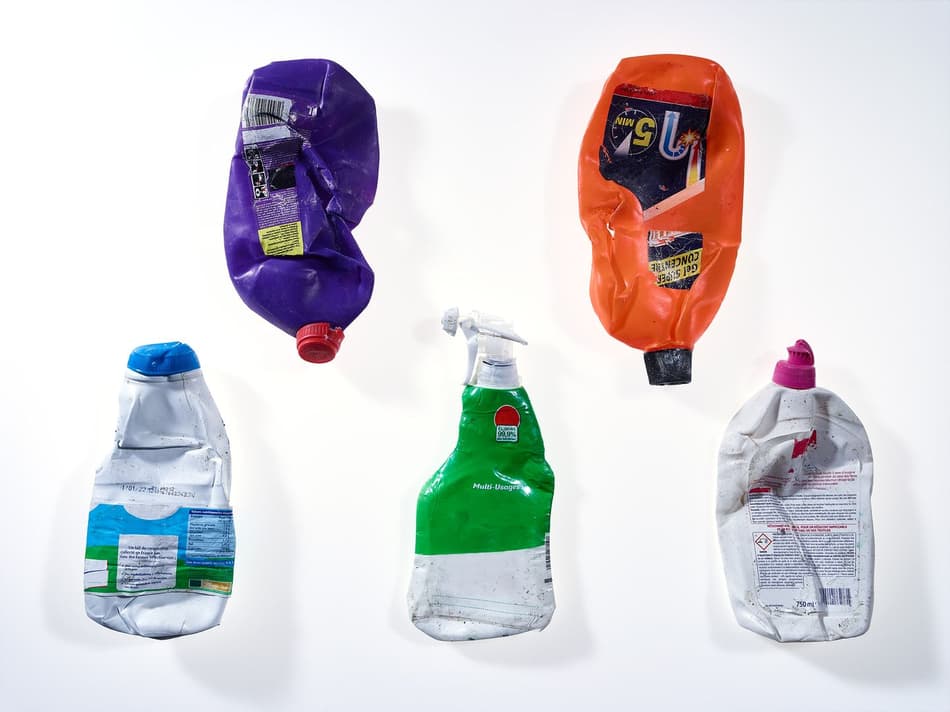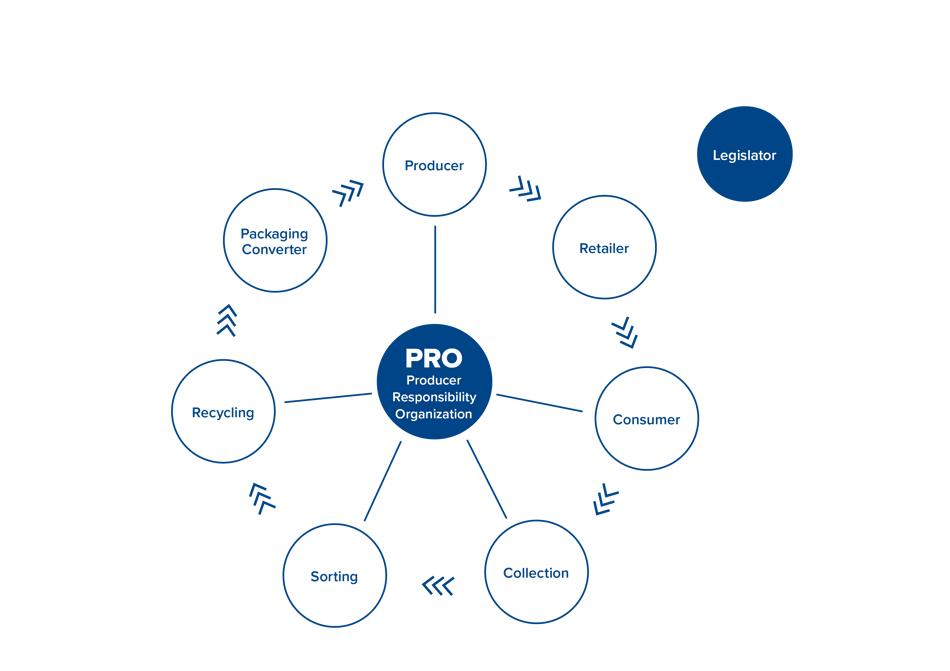
What is Extended Producer Responsibility (EPR)?
Learn more about Extended Producer Responsibility: What is it? Why is it important, and what does it mean for manufacturers, and others in the value chain?
The issue of waste management is growing both in scale and the public’s awareness of its environmental impact. Society produces approximately 300 million tons of plastic waste each year – that’s almost the weight of the entire global population. Most material from products and packaging are lost to landfill, incineration, or littered into the environment rather than efficiently recycled. Ultimately, more than 13 million tons of plastic waste leaks into our oceans every year.
It is clear that the private sector has played a role in this waste crisis. According to reports, only 20 firms are responsible for creating 55 percent of global plastic waste. While many companies have stepped up voluntarily to address the challenge, research shows that even if all current commitments are met, the world would only reduce plastic waste leakage by around seven per cent.
At this point, it is clear that voluntary action by the private sector alone is not enough to turn the tide on the plastic waste issue, due to the enormity of the challenge. This is why experts point to the need for public policy. New legislation can set the ground rules for all manufacturers, creating a level playing field and helping shift society from a linear, take-make-waste economy to a more circular economy where resources are reused again and again to maximize their value – and crucially, kept out of the environment. One policy instrument that would accelerate this shift is called “Extended Producer Responsibility”.
Below we take a look at what it is, why it is important, and what it means for manufacturers.
What is Extended Producer Responsibility and why is it important?
Extended Producer Responsibility (EPR) has been introduced in many jurisdictions around the world to ensure that effective processes and infrastructure are in place for collecting, sorting, and recycling product and packaging material waste.
A mandatory legislation, EPR is an environmental protection strategy outlining that responsibility for the sustainable and safe take-back, recycling, and final disposal of products and packaging at the end of their lifecycle should remain with the producers and the importers and retailers of those materials, rather than being passed on to government, the public, and the resource industry. Consumer participation is still required for this shift in policy to be successful, which system designers can enable by designing convenient collection infrastructure that is easy to use.
EPR can improve the circularity of packaging through modifications in both the upstream and downstream ends of the value chain. Upstream, the useful life of products and packaging can be maximized through design that prioritizes reuse, repair, and durability. EPR can also incentivize design for recyclability (DfR) so that once the product reaches the end of its lifecycle, there are downstream solutions that can recycle the material back into high-quality products. The implementation of EPR laws is a powerful measure to improve both the quantity and quality of what gets recycled, thereby supporting the acceleration to a circular economy.
EPR also has a role to play in supporting the legal framework for responsible resource management, as outlined in the United Nations Sustainable Development Goal (SDG) #12 – ‘Ensure sustainable consumption and production patterns’.

How do Extended Producer Responsibility programs work?
EPR programs are enacted by governments and put a legal obligation on producers to adhere to laws concerning the lifecycle management of their products and packaging, including the achievement of performance targets. Producers can choose whether to meet the required obligations themselves or pay to outsource the management to a third-party organization, such as a Producer Responsibility Organization (PRO).
Although there are fundamental principles and elements that generally apply in all EPR programs, they must also adapt to local conditions - such as existing recycling infrastructure, business climate, and political landscape - to be successful.
How is Extended Producer Responsibility funded?
EPR is industry funded: Producers cover the costs for the lifecycle management of their products and packaging, including collection, sorting, and recycling. Producers create the products and packaging put on the market and therefore are the stakeholder who is best suited to implement positive changes at the end of the product lifecycle.
This represents a shift away from traditional waste management approaches, where the responsibility for funding rests with municipalities and residents (commonly through taxes or direct subscription fees). To ensure compliance, an EPR law usually stipulates producers will incur a financial penalty if they do not fulfill their EPR obligations, such as meeting performance targets for recycling.
Extended Producer Responsibility in action
An example of EPR is a deposit return scheme (DRS) for beverage containers. A DRS works by placing a monetary value on waste. The consumer pays a small, but meaningful deposit when they buy a canned or bottled beverage, which is then refunded in full when the consumer returns the empty container, for example through a reverse vending machine (RVM) at their local retailer. After the empty bottle is returned through the RVM, it can be sorted and then recycled into a new container, over and over again.
Extended Producer Responsibility for Printed Packaging and Paper (EPR-PPP) is another example of this. Producers cover the costs of collecting and recycling printed paper and packaging through drop-off and curbside recycling operations. The program is funded by producers, and consumers are not charged a fee.
As announced in the Ellen MacArthur Foundation’s 2021 Statement and Position Paper – Extended Producer Responsibility - a necessary part of the solution to packaging waste and pollution, TOMRA along with more than 150 businesses and key stakeholders around the world have stated their commitment to and support of EPR. In Europe, the mineral water and soft drink sectors have clearly stated their support for EPR by calling for the introduction of a well-designed DRS for beverage containers.
What does Extended Producer Responsibility mean for consumers?
EPR is an industry-focused policy approach. However, consumer participation is imperative for EPR programs, such as DRS, to be successful. For example, producers can design packaging to be easily recycled, but if consumers choose to dispose of that packaging rather than recycle it, high recycling rates are not possible. For EPR to be truly successful, it requires behavioral changes from both producers and consumers.
What is the future of Extended Producer Responsibility?
The future of EPR is likely to play out differently depending on implementation in developed vs. developing markets. Developed markets have some base level of recycling infrastructure, whereas developing markets today tend to lack recycling infrastructure.
For developed markets, where the goal is to design 75% of plastic packaging for recycling by 2030, the focus will be on high quality systems that deliver circularity.1
In developing markets, where a lower target of 50% of plastic packaging designed for recycling by 2030 are being discussed, emphasis needs to be placed on the building out of widespread but basic collection and recycling infrastructure that will be required first. This will enable EPR laws to be met.
EPR: Creating accountability for how resources are handled
EPR is a strategic policy approach to ensure that producers and manufacturers take responsibility for the full lifecycle of their products and packaging. This industry-funded approach incentivizes producers to prioritize packaging design and management based on the waste hierarchy to achieve better environmental outcomes.
This means more producers offer reuse, repair, and recycling over disposal, and ensure that we keep waste out of our oceans and the environment.
If you want to learn more about EPR and what it means for both producers and consumers, download TOMRA’s latest white paper EPR Unpacked: A Policy Framework for a Circular Economy. This white paper offers an in-depth look into this policy approach and how it can help with the transition to a circular economy.
Sources1 - Resource Recovery Playbook: Expectations for the circular economy of 2030 and the steps required to a sustainable future – TOMRA, 2020
